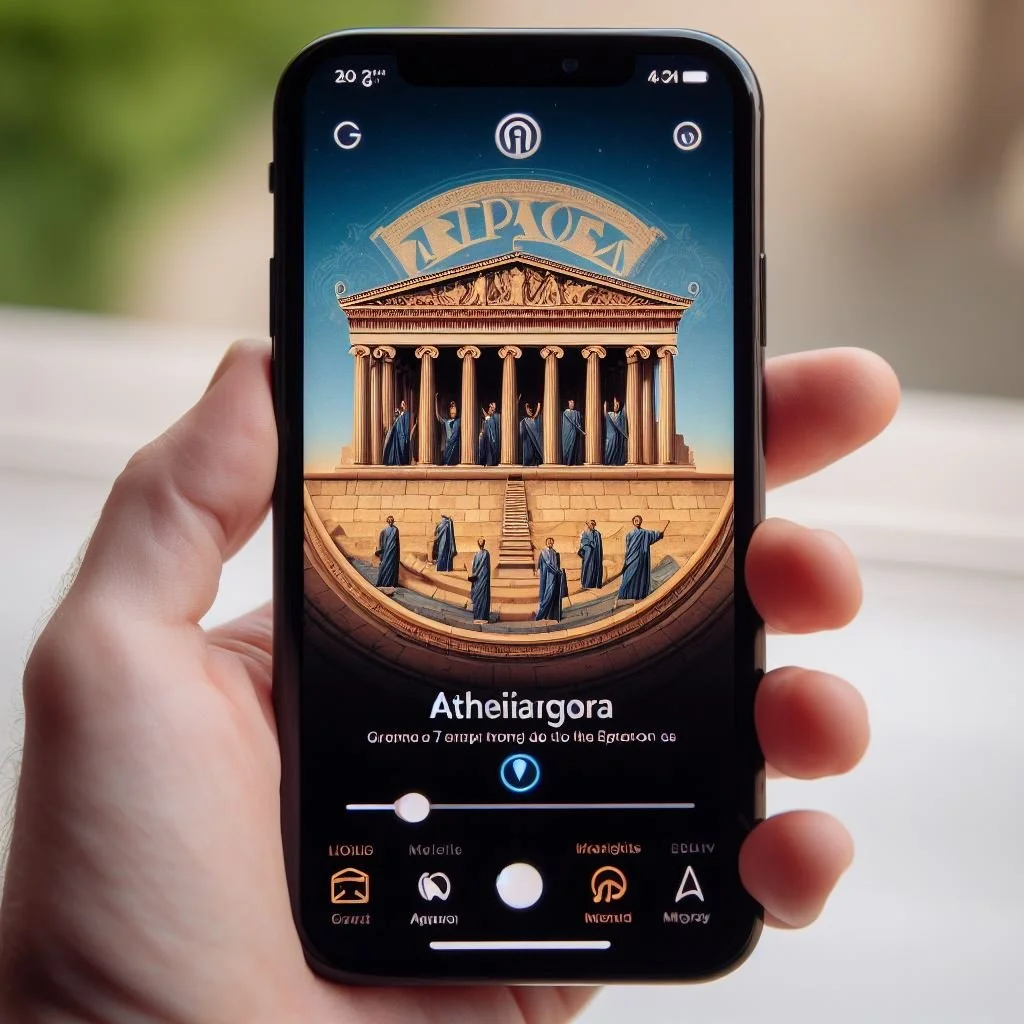CorUS: Proofs of Concept
Proof Of Concept: The Ethics
CorUS aims to allow dynamic conversation facilitated by AI through Natural Language Processing (NLP), allowing every individual’s word to not be just heard, but understood, analysed, and blended with others to form a coherent collective narrative. This fostering democratic discourse aligns with ethical AI principles in envisions a future where every voice not only counts but resonates.
As such CorUS acts as a pioneering endeavour in ethical AI in embracing the democratic ethos, promoting inclusivity and collective wisdom over algorithmic dictation.
It reflects a conscious effort to align AI with human values, fostering a symbiotic relationship between AI and society. It demonstrates how AI can be designed to augment rather than overshadow human interaction, an issue at the core of many ethical debates surrounding AI.
Inverting the AI Paradigm
CorUS inverts a basic AI paradigm. It's not about AI dictating responses, but about amplifying the resonance of collective human insight. This inversion of traditional AI use, where the collective voice is amplified rather than diluted, is a profound shift. It places the emphasis on communal insight rather than solely on AI-generated responses, thus fostering a more democratic digital interaction.
Which makes not just a tool but a movement towards informed, inclusive decision-making. It empowers every individual to contribute to collective wisdom and could make CorUS the beacon of democratic discourse in the digital age.
CorUS pioneers a digital arena where democratic discourse can thrive. By amalgamating diverse opinions into a unified message, it revives the essence of collective decision-making, promoting a balanced dialogue over polarised debates. It also serves as a conduit for informed decision-making; organizations, communities, and even governments can tap into the collective wisdom, gaining invaluable insights on critical issues.
At the heart of CorUS is the empowerment of individuals. By ensuring every voice is a vital part of the collective narrative, it promotes a sense of inclusivity and representation, making the digital discourse more equitable and just. From ancient Athens to the digital age, countless individuals have sacrificed to ensure the right to be heard. In this grand march of human progress, individual participation is not just valuable; it's essential. CorUS invites ever individual be an active part in shaping a wiser, more compassionate union of humanity.
Proof of Concept: The Technology
AI-driven Collective Messaging
At the core of many AI systems, especially those dealing with language, is the ability to predict, based on historical data, what word or expression might come next. This prediction is often quantified in terms of probabilities or percentages. Such mechanisms underpin the generation of text, the understanding of context, and the delivery of coherent responses. The amalgamation of opinions in CorUS leverage similar AI principles. By analysing the text data from individuals, the system can identify common themes, sentiments, and consensus, translating disparate inputs into a unified message. This process involves advanced Natural Language Processing (NLP) and machine learning techniques to ensure accurate representation of collective opinions.
How it works:
Input Collection: Collection of diverse individual inputs through intuitive interface.
Real-Time Data Processing: Utilise Natural Language Processing (NLP) to analyse, categorize, and find common themes in real-time. Real-time processing of individual inputs is pivotal, as AI swiftly analyses, categorizes, and amalgamates these inputs into a collective message, facilitating timely and meaningful discussions. Utilization of NLP for real-time analysis and categorization.
(In plain language: NLP is like a bridge enabling computers to understand and respond to human language. In CorUS, when an opinion is voiced, NLP dives into the words, grasps the essence, and then mingles it with the voices of others. It's like having a thoughtful conversation where every voice is heard, and a collective message is crafted from the chorus of individual inputs. Just as a choir harmonises different voices into one melody, NLP harmonises diverse opinions into a cohesive message that resonates with the collective sentiment)
3. Topic Modelling: Used to discern common threads
4. Sentiment Analysis: Used to gauge the emotional tone
5. Output Message Formation: Amalgamate common opinions into a collective message reflecting the consensus or major viewpoints.
6. Output Display: Display the collective message on the platform for users to see, react to, or further discuss and potential dissemination through integration with external platforms.
7. Interaction with External Platforms: By doing so CorUS extends its reach, enabling wider engagement and fostering dialogues across different digital arenas.
8. Security & Privacy: Ensuring the security and privacy of user data is paramount. CorUS would implement robust measures to safeguard user information while promoting open discourse.
Scenarios
CorUS is designed to scale and facilitate discourse and decision making on any level local, national, or even global.
Examples:
Local – A School Debates Pupils Wearing Uniforms: Staff pupils and carers voice their opinions and views. CorUs amalgamate these into a collective narrative and provides a consensual transparent road map for resolution
National - Border Barrier Deliberation: Citizens voice their perspectives. CorUS amalgamates these into a collective narrative, providing a transparent view of national sentiment.
Global - Mars Colonisation: Individuals globally share viewpoints. CorUS crafts a unified message, reflecting humanity’s collective aspiration, guiding international policymakers.
Scenario 1. Local- A School Debates Pupils Wearing Uniforms:
Comments: From 250 parents, pupils and school staff are added
Input Analysis: The 250 comments are analysed in real-time using NLP to identify keywords, sentiments, and common themes.
Theme Aggregation: Common themes are aggregated, like 'cost concerns', 'individuality', and 'professional appearance'.
Message Formation: A collective message is formed, summarising the major viewpoints and sentiments.
Output Display: The collective message is displayed on CorUS, providing a clear, concise representation of the community's stance on school uniforms.
In cases of tied votes and casting votes
CorUS would accurately represent this division in the collective message.
Display a balanced summary of the arguments for and against, ensuring both sides are fairly represented.
Transparent presentation of collective opinion underscores CorUS's commitment to fostering informed, democratic discourse.
An AI-based Vox Humana could analyse the discourse and suggest a balanced resolution.
An involved designated participant casts deciding vote with AI ensuring data-driven neutrality and collective fairness and responsibility.







